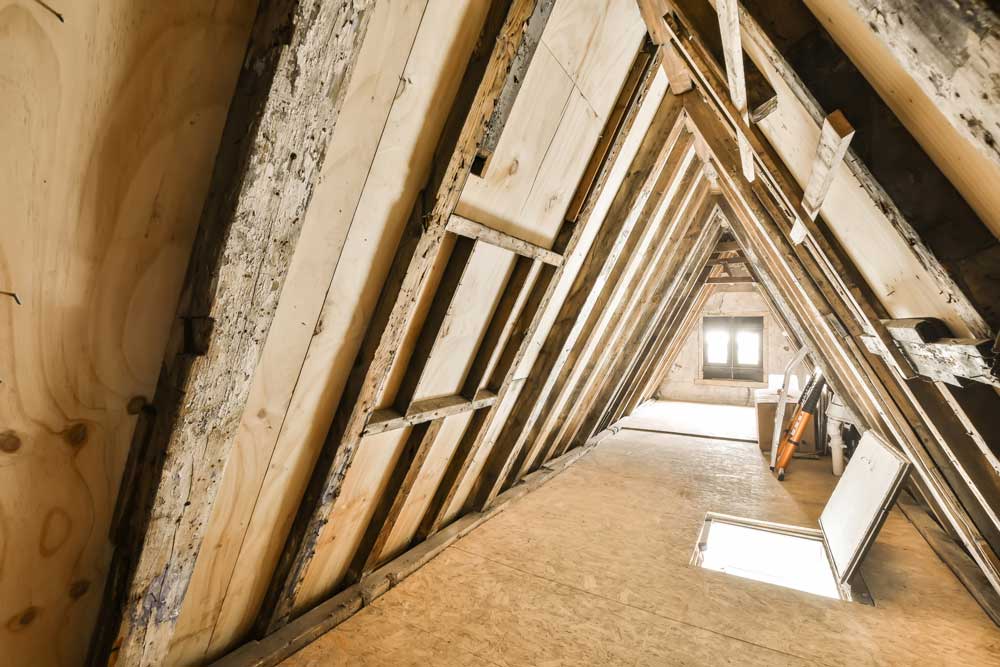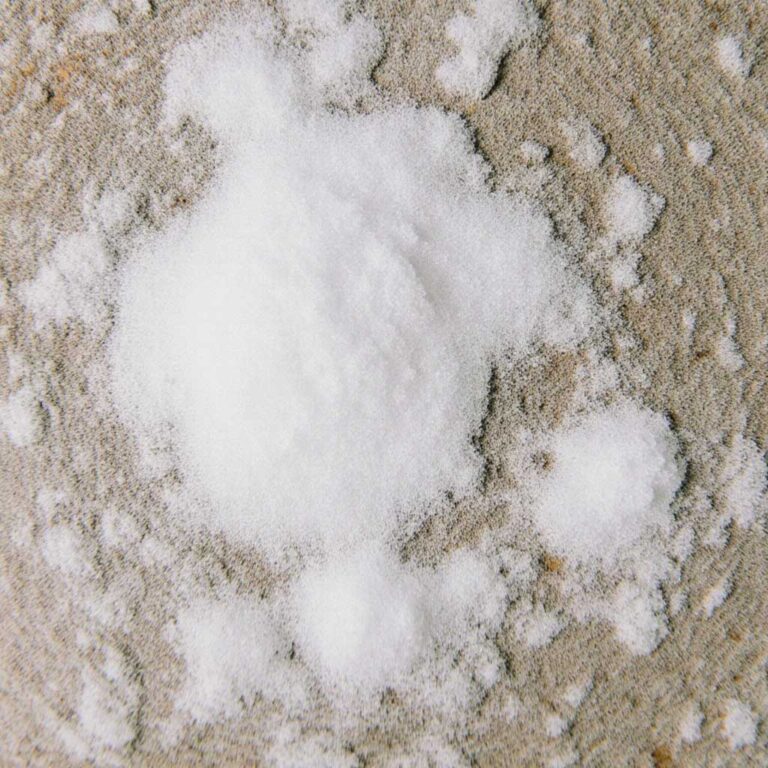Finding mold in attic spaces is stressful. It looks bad, smells worse, and raises one big question—how do you get rid of it?
The truth is, removing attic mold isn’t as simple as spraying it with bleach. Whether you’re dealing with a few black spots or thick white patches, mold needs the right removal method—otherwise, it can come back fast.
In this guide, you’ll learn:
- What works (and what doesn’t) when it comes to attic mold remediation
- Whether DIY mold in attic removal is safe
- How much mold in attic removal might cost
- What steps you can take to stop it from returning
Let’s get into what actually helps—and what just wastes your time.
Can You Remove Mold from the Attic Yourself?
In some cases, yes—you can handle mold in attic removal on your own. But not always. The size of the mold patch, the type of mold, and the cause of the problem all matter.
When DIY Removal Might Work:
- The affected area is small (less than 10 square feet)
- The mold is growing on non-porous surfaces (like metal or plastic)
- There’s no sign of structural damage
- You’ve already fixed the source of moisture
Important: Always wear protective gear—gloves, N95 mask, and safety goggles—before disturbing mold. Also, seal off the space to avoid spreading spores.
Learn more in our guide on DIY Mold Removal: When and How to Do It Yourself.
When You Should NOT Try DIY:
- The mold covers a large area
- You suspect black mold in attic areas (which may be toxic)
- The attic has poor airflow or is hard to access
- You haven’t identified where the moisture is coming from
In those situations, attic mold treatment is best left to professionals with the right tools and safety training.
How to Get Rid of Mold in Attic Spaces – Step-by-Step
Removing mold in attic areas involves more than just scrubbing it off. You need a step-by-step plan to get rid of mold and prevent it from coming back.
Step 1: Inspect and Isolate the Area
- Use a flashlight to find all moldy spots—check rafters, insulation, and under the roof
- Seal the attic with plastic sheeting to stop spores from spreading
Step 2: Wear Protective Gear
- N95 mask or respirator
- Rubber gloves
- Safety goggles
- Disposable coveralls if possible
Step 3: Remove Contaminated Materials
- Bag and discard moldy insulation or soft materials
- Vacuum surfaces with a HEPA vacuum to collect loose spores
Step 4: Clean the Surfaces
- Wash wood and hard surfaces with soap and water
- Apply a mold-killing solution like vinegar or hydrogen peroxide
- Avoid bleach—it doesn’t always reach deep mold and can harm wood
Step 5: Dry the Area Well
- Use fans or a dehumidifier to dry everything thoroughly
- Don’t move on until all surfaces are completely dry
Step 6: Address the Moisture Source
- Fix leaks, add ventilation, or install attic fans
- Mold will return if you don’t solve the moisture problem
Want a deeper breakdown of proper cleanup? See our full guide: 10 Steps to Proper Mold Remediation
How Much Does It Cost to Remove Mold from an Attic?
The cost of attic mold removal depends on several factors, including how large the affected area is, how severe the mold growth is, and whether you hire a pro or do it yourself.
Typical Cost Ranges:
- DIY cleanup: $50–$300 (for gear, cleaners, and tools)
- Small attic (under 10 sq ft): $500–$1,500
- Medium attic (10–30 sq ft): $1,500–$3,500
- Large infestation: $4,000 or more
Factors That Affect the Price:
- Type of mold (black mold is costlier to remove)
- Damage to insulation or wood (may require repairs)
- Access issues (tight spaces cost more to work in)
- Need for lab testing or professional containment
Learn more here: How Much Does Mold Removal Cost?
Remember: Small patches can be handled with care and the right tools. However, large-scale mold often requires pros to make sure the job is done safely and thoroughly.
When to Call in the Professionals
Sometimes, attic mold problems are too big—or too risky—to handle on your own. In these situations, hiring a professional mold removal service is the safest and most effective option.
Call the Experts If:
- The mold covers a large area (over 10 square feet)
- You suspect black mold or another toxic species
- There’s visible structural damage to wood, drywall, or insulation
- You have health issues that could be worsened by exposure
- Previous attempts at removal didn’t work
What Professional Services Involve:
- Mold testing and inspection
- Safe containment and removal
- Cleaning and air filtration
- Moisture source repair
- Post-removal verification and clearance
Professionals also wear full protective gear and use specialized equipment, making the process safer and more thorough.
Learn more here: Professional Mold Removal Services.
How to Prevent Mold from Coming Back
Mold can return if the conditions that caused it aren’t fixed. After cleaning your attic, it’s crucial to make changes that prevent future outbreaks.
Prevention Tips:
- Improve ventilation
Install soffit and ridge vents to keep air flowing and reduce trapped moisture. - Add insulation
Proper insulation reduces condensation, especially in colder climates. - Use dehumidifiers or moisture barriers
In humid areas, a dehumidifier can maintain safe moisture levels. Moisture barriers can also help in certain attics. - Check for leaks often
Inspect your roof, vents, and pipes regularly—especially after storms. - Schedule seasonal inspections
Attics are more vulnerable during rainy seasons. Catching moisture issues early is key to preventing mold.
Taking these steps can help you avoid repeating the cleanup process and keep your attic mold-free long-term.
Final Thoughts: Don’t Let Attic Mold Linger in the Shadows
Attic mold isn’t always easy to spot, but it can cause big problems if left untreated. Whether you’re seeing stains on wood, smelling a musty odor, or noticing poor ventilation, these are all red flags worth investigating.
Early detection and proper cleanup—whether DIY or professional—can save you thousands in long-term damage. And remember, prevention is just as important as remediation. Keeping your attic dry and well-ventilated is your best defense.
Still not sure what to do? Start with a proper inspection and don’t hesitate to call in professional mold remediation services for severe cases.
Frequently Asked Questions about Attic Mold Removal
1. Can attic mold make you sick?
Yes, attic mold can cause health issues like headaches, sneezing, coughing, and other allergy-like symptoms. People with asthma or weakened immune systems are especially at risk.
2. Is attic mold covered by homeowners’ insurance?
It depends. Some insurance policies cover mold caused by sudden problems like burst pipes, but not by long-term neglect. Always check your policy details or ask your insurer.
3. Can I remove attic mold myself?
Small areas of mold can often be handled with the right safety gear and methods. But for widespread or toxic mold, it’s safer and more effective to hire professionals.
Also Read
- Innovative Technologies for Mold Detection and Remediation
Discover the latest tools that make mold detection faster and more accurate. - What to Do When Mold Comes Back After Remediation
Learn why mold sometimes returns—and how to prevent it. - Should You Stay Home During a Mold Remediation?
Weigh the risks and decide what’s safest for your family. - Ghost Mold: The Invisible Threat Lurking After Clean Remediation Jobs
What happens when mold “disappears” but leaves behind hidden hazards? - The Mold Checklist: What to Watch For and What to Do
A practical guide to identifying, preventing, and addressing mold issues.












